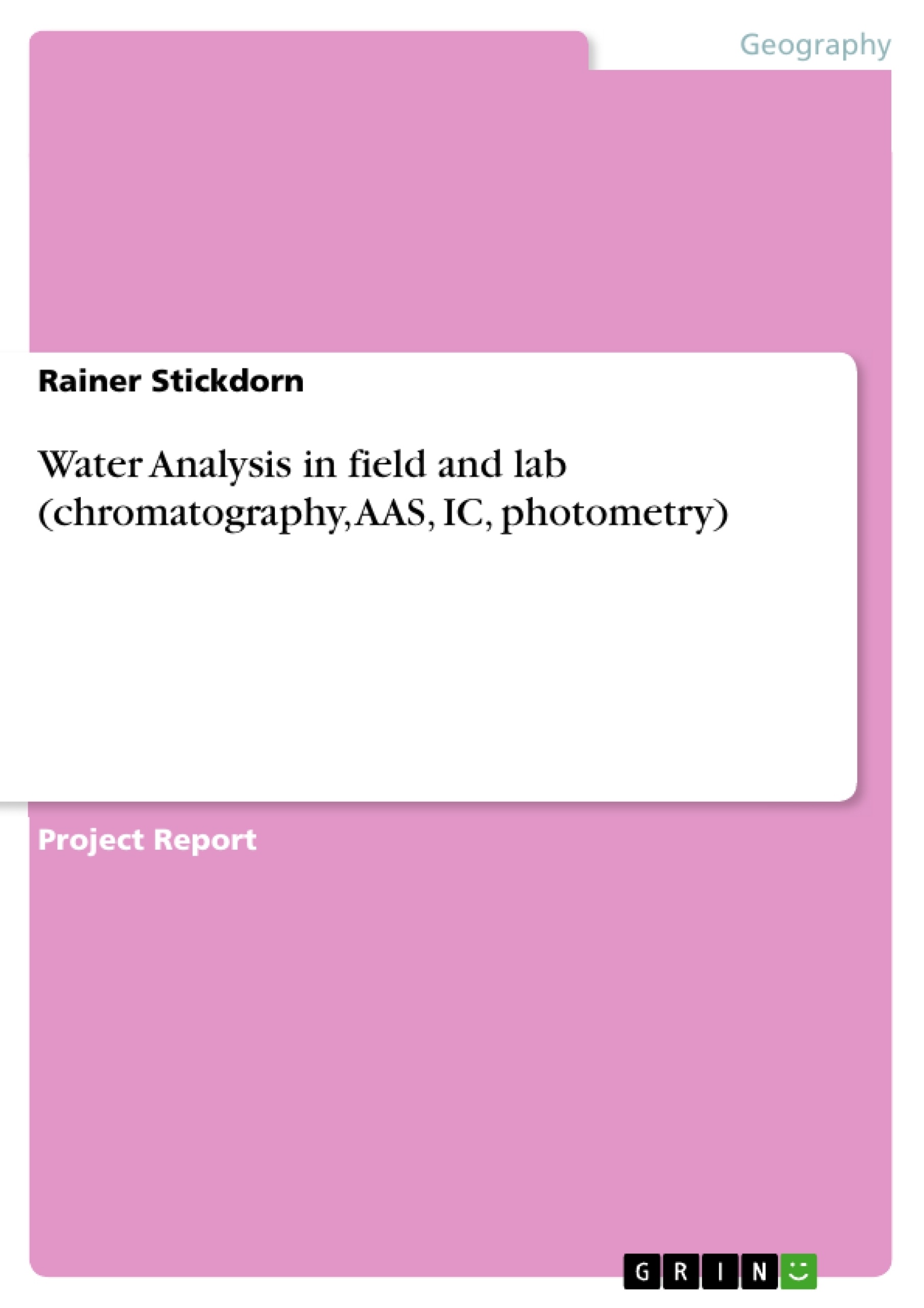The Water Analysis exercises (TuCaN 3214) are part of Special Modul SM9 “Hydrogeological Methods” of the MSc TropHEE and scheduled for the 1nd semester but had to be adjourned to the 2nd semester due to capacity bottlenecks in the lab. This course prepares for the HydrogeologicalField Course (TuCaN 3417) scheduled for the 2nd semester.
The Water Analysis course contains lectures and a practical part with surface water sampling, measuring water temperature, EC, pH, oxygen concentration and alkalinity in the field as well ion concentrations in the lab with AAS, IC and Photometry. A salt concentration experiment (EC = f(salt concentration)) with 2 different salts and an introduction to chromatography was also part of the exercises.
Monday we walked along the stream Darmbach with a water sampling case with multimeter, several electrical probes, plastic bottles, titrator, .... At six stations we took water samples: 2 plastic bottles per station/location - one for anion-analysis and one for cationanalysis (with 1 cubic cm of acid HCl to stabilize the sample against degradation/precipitation before being analyzed in the lab) and measured water parameters like water temperature, EC, pH and oxygen concentration. Alkalinity (HCO3+, CO32+) was measured by titration with 1.6 normal sulfuric acid (H2SO4) until the related indicator changes color (at pH 4.3).
One week later we got an introduction to chromatography and conducted an experiment dissolving increasing amounts of 2 salts and measuring the electric conductivity EC of the two solutions.
On friday we analyzed our water samples from Darmbach with lab equipment like AAS, IC and Photometry.
Table of Contents
1 Introduction
2 Field work at Darmbach (May 11)
2.1 Multimeter measurements
2.2 Titration for alkalinity
2.3 Results from field measurements
3 Chromatography & salt experiment (May 18)
3.1 Chromatography
3.2 Salt experiment
4 Lab analysis with AAS, IC and Photometry (May 22)
4.1 Atomic absorption spectroscopy - AAS
4.2 Ion Chromatography - IC
4.3 Photometry
5 Synopsis of measurements
5.1 Schoeller diagram & ion balance
5.2 Stiff diagrams
5.3 Piper diagram
5.4 Discussion of Darmbach water properties
6 References
- Quote paper
- Dipl.-Ing., MSc, Rainer Stickdorn (Author), 2015, Water Analysis in field and lab (chromatography, AAS, IC, photometry), Munich, GRIN Verlag, https://www.grin.com/document/433465
-

-

-

-
Upload your own papers! Earn money and win an iPhone X. -

-
Upload your own papers! Earn money and win an iPhone X. -

-
Upload your own papers! Earn money and win an iPhone X. -

-
Upload your own papers! Earn money and win an iPhone X. -

-
Upload your own papers! Earn money and win an iPhone X. -

-
Upload your own papers! Earn money and win an iPhone X. -

-
Upload your own papers! Earn money and win an iPhone X. -

-
Upload your own papers! Earn money and win an iPhone X.

